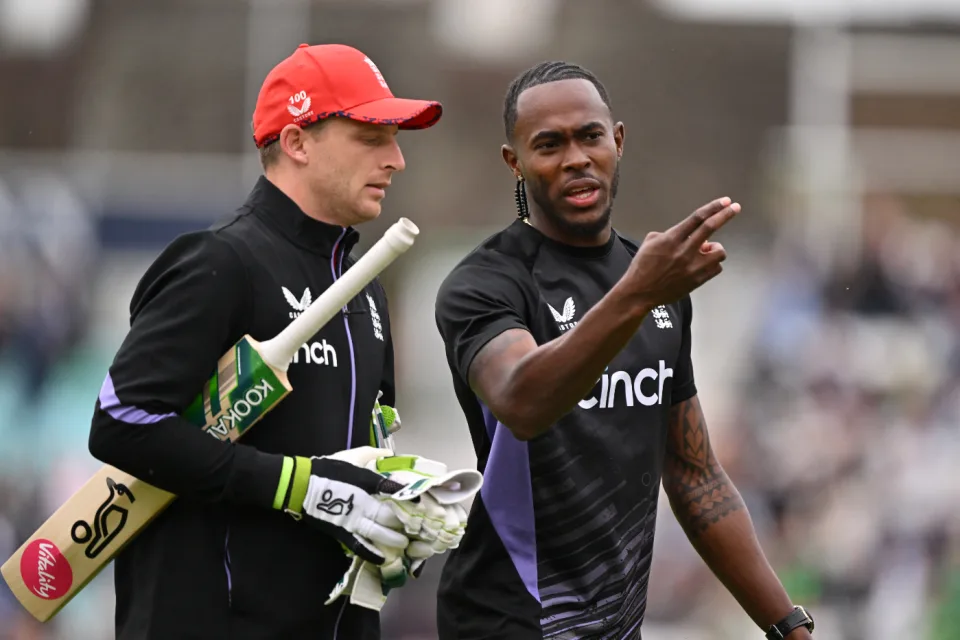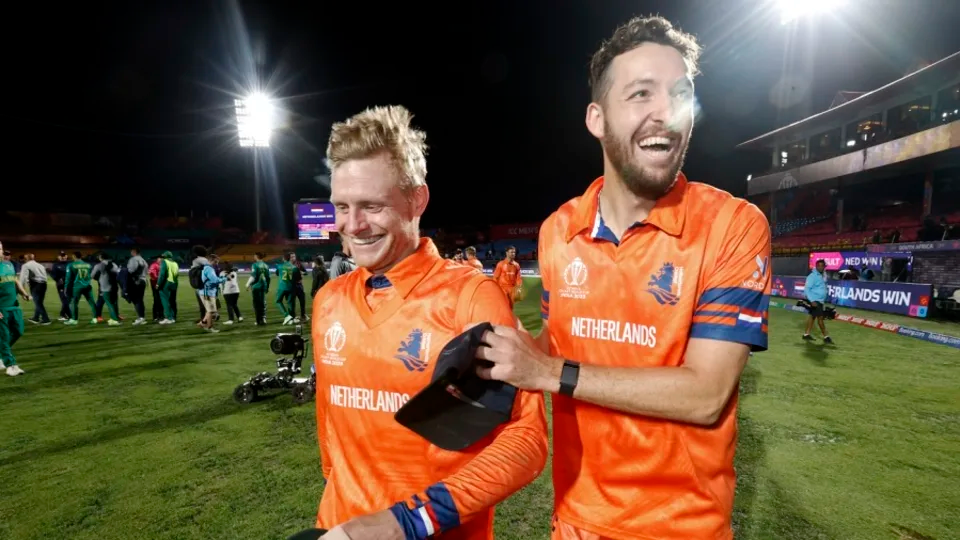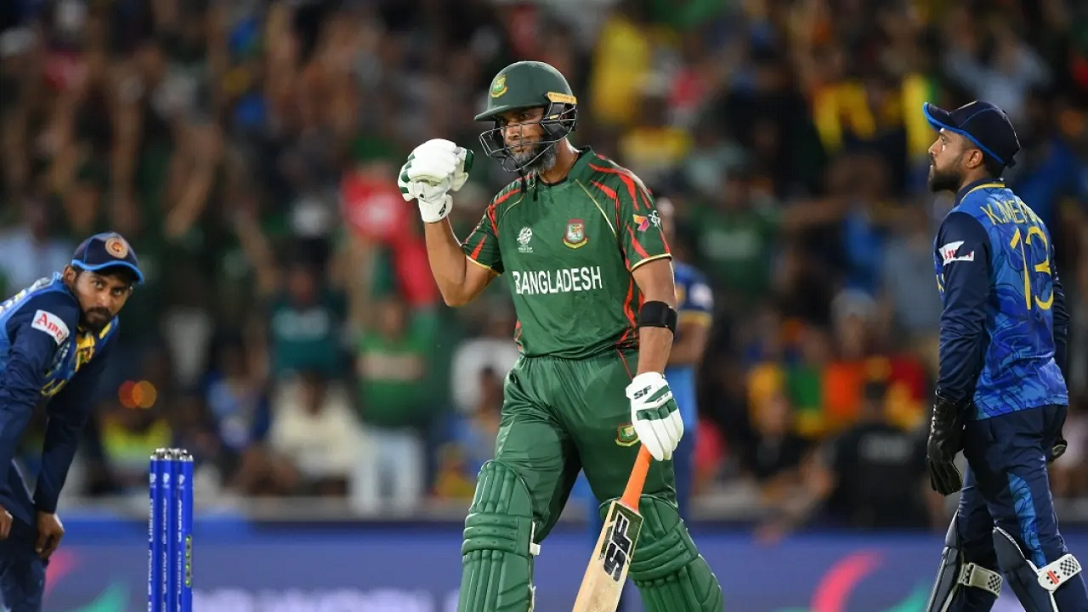Sports
Twenty-five years on from Sri Lanka’s most acrimonious tour

By Rex Clementine
Australia’s support to develop and nurture the game of cricket in Sri Lanka is unparalleled. From voting in favour of granting Sri Lanka Test status in 1981 to donating US$ 100,000 so that the board could afford a qualified foreign coach in 1994, the Australian Cricket Board has been a pillar of strength to us. But Arjuna Ranatunga’s side’s tour of Australia in 1995 was a bitter pill to swallow. Twenty-five years later, many admit that this tour was the one that transformed Sri Lankan cricket – from also-rans to fierce competitors.
Leading television personality Brian Thomas once asked Steve Waugh about sledging as his side was notorious for what they called ‘mental disintegration’ of the opposition. Waugh’s reply was interesting. He said, “Arjuna Ranatunga is the biggest sledger in the world. One Ranatunga is equal to 11 Australians.”
The 1995 tour brought out the ugly side of Australians. The Sri Lankans responded with uglier stuff and players of both sides remained at daggers drawn for years. It is the tradition in Australia that the losing side visits the winners for a beer after a game. That protocol was breached. Sri Lankans didn’t buy into the argument that you play hard on the field but cooled things off at stumps. They took the Aussies head on.
There were controversies – plenty of them. During the opening Test in Perth, the tourists were accused of ball tampering. But later they were exonerated. Then in the second Test at MCG, Murali was no balled for throwing. There were some 55,000 fans witnessing the Boxing Day encounter and later it emerged that some officials of the Australian board were aware that the spinner was going to get a public humiliation. But the greatest thing about Australians is that they owe up to their mistakes. Of all people, Steve Waugh in his autobiography ‘Never Satisfied’ admits that it shouldn’t have happened.
Then there was horrendous umpiring and many felt Sri Lankans were hard done by. The other great attribute about Aussies is that they call a spade a spade. Former captains Richie Benaud and Ian Chappell in commentary didn’t mince any words about the standards of umpiring.
Amidst the chaos, the competitive nature of the Sri Lankans was almost forgotten. Their bowling was one dimensional those days and was not able to take 20 wickets. Batting, however, was classy.
Hashan Tillakaratne posted a hundred in the opening Test. To date, he is the only Sri Lankan to have scored a hundred in Perth, considered the fastest wicket in the world. Asanka Gurusinha came up with a back to the wall hundred at MCG in the Boxing Day Test. The tour also proved to be the arrival of Sanath Jayasuriya as a Test match opener following his century at the Adelaide Oval.
It was quite a formidable attack too with Glen McGrath and Shane Warne in their prime and Sri Lankans returned home with their heads held high, something that you don’t find happening too often when going down under.
Aravinda de Silva was a disappointment. Much was expected of him and the way the Aussies celebrated his dismissal each time gave you an indication how much they valued his wicket. In six innings, he managed only 98 runs with a highest score of 28.
Aravinda did finish up as the highest run getter for the team in the tri-nation competition that took place simultaneously along the Test series. But the team expected much more from him.
West Indies were the third team in the tri-nation competition and they were quite a strong force at that stage. To their credit, the Sri Lankans defeated West Indies and qualified for the finals.
The tour ended late January and the World Cup was just two weeks away. This outing had toughened up the Sri Lankans like any tour of Australia would do.
After Sri Lanka qualified for the finals of the 1996 World Cup, Arjuna was asked which opposition he would prefer in the final. He said, bring on the Aussies. Not many teams wanted to play the Aussies in a World Cup final at that stage. But the Sri Lankans were up for it. And the rest as they say is history.
Sports
England face Australia in the battle of champions

The first truly heavyweight clash of this expanded T20 World Cup format comes freighted with both history and subplots. A rematch of the 2010 World T20 final at Kensington Oval, the match pits Jos Buttler’s defending champions – who are aiming to become the first team to retain the trophy – against the Australian winning machine, victors at the 2021 edition and current world title-holders in Test and ODI cricket. And that’s before you throw in the Ashes for afters.
Already there is added pressure on England, after the rain in Bridgetown led to a share of the points in their opener against Scotland (and that having conceded 90 runs from 10 overs without taking a wicket in a tepid bowling display). Lose to their oldest rivals and it will leave their Super 8 prospects open to being waylaid by the perils of net run-rate calculations, or worse.
The Scotland match was the third abandonment in five suffered by England, after a rain-affected home series against Pakistan, which has clearly hampered their readiness for this campaign after almost six months without playing T20 together. It does not take much for a side to click in this format – and England looked in decent shape when they did get on the field against Pakistan – but Buttler will be anxious for things to go their way on Saturday, if only to avoid further questions referencing the team’s disastrous ODI World Cup defence last year.
Australia, under the laidback leadership of Mitchell Marsh would love nothing more than to add to the English sense of jeopardy – having helped bundle them out of the tournament in India on the way to taking the crown. Their head to head record is less impressive in T20 however, with England having won six of the last seven completed encounters, as well as that 2010 final.
Despite a wobble with the bat, Australia avoided mishap against Oman earlier in the week, the experience of David Warner and Marcus Stoinis shining through in difficult batting conditions. Surfaces in the Caribbean – not to mention those games staged in the USA – have already had teams scratching their heads; rather than the “slug-fest” England had prepared for, following a high-scoring tour of the Caribbean in December, it looks as if boxing smart may be the way to go.
Speaking of Warner, this could be the last time he faces up against England in national colours – and another match-winning contribution would likely reduce the chances of them meeting again in the knockouts. On the other side of the card is Jofra Archer, fresh from an emotional maiden outing at Kensington Oval and ready to take on Australia for the first time in any format since 2020. Can Mark Wood fire up England’s campaign, as he did during last summer’s Ashes? Will Pat Cummins be back to harass the old enemy once again? Seconds out, it’s almost time to rumble.
Cummins is set to return after being rested for the Oman game, which saw Mitchell Starc leave the field with cramp. Starc is understood to be fine and could keep his place – which would likely see Nathan Ellis miss out. Marsh is still not fit to bowl, with Australia likely to continue with the allrounder combination of Stoinis and Maxwell to give them cover.
Australia (probable XI): David Warner, Travis Head, Mitchell Marsh (capt), Glenn Maxwell, Marcus Stoinis, Josh Inglis (wk), Tim David, Pat Cummins, Nathan Ellis/Mitchell Starc, Adam Zampa, Josh Hazlewood
The one change England may consider is Reece Topley coming in for Wood, with the expectation that there will be some rotation among the seamers through the course of the tournament.
England (probable XI): Phil Salt, Jos Buttler (capt & wk), Will Jacks, Jonny Bairstow, Harry Brook, Liam Livingstone, Moeen Ali, Chris Jordan, Jofra Archer, Adil Rashid, Reece Topley/Mark Wood
[Cricinfo]
Sports
South Africa up against their bogey team in batter-unfriendly New York

Once is coincidence, twice is a clue, and three times is proof.
To paraphrase Agatha Christie, that is the narrative around South Africa’s meeting with Netherlands at this T20 World Cup.
The Dutch beat South Africa at the 2022 tournament and ended their semi-final hopes in a match where South Africa appeared to be sleep walking, and then beat them again at the 2023 ODI World Cup, where they exposed South Africa’s vulnerability in the chase. If they to do the treble, not only will Netherlands take the lead in Group D, but they will offer conclusive evidence of the threat they pose to Full Members, especially South Africa.
Of course, it will take some doing after South Africa’s opening performance against Sri Lanka, where they reduced their opposition to their lowest T20I total and chased it down in fairly straightforward fashion thanks to the most stable middle-order of their white-ball era. In Aiden Markram, Tristan Stubbs, Heinrich Klaasen and David Miller, South Africa have bankers and big-hitters and, for this match, they also have the advantage of experience. They’ve already played at Eisenhower Park, and have first-hand knowledge that run-scoring doesn’t come easily;Klassen said they are prepared to use their “cricket brains” and play “smarter cricket”.
But the conditions could be good news for Netherlands, who are not naturally a line-up of big hitters and build their innings on a foundation of turning ones into twos. In other words, they tend to take a slightly more conservative approach to batting, which may work well here, but they’ll be wary of the uneven bounce of the surface and will have to come up with plans to counterattack especially against South Africa’s seamers. Their own bowlers were exemplary in Dallas and will look to build on that performance against a line-up that will likely be more proactive than Nepal’s, but who they have managed to keep quiet not once, but twice in the past. Third time’s the charm, they say.
Anrich Nortje’s stunning return to form against Sri Lanka means South Africa may not have to tinker with the bowling combination, and Gerald Coetzee and Tabraiz Shamsi may have to wait their turns to get a game. The batting line-up should be unchanged, with no space for Ryan Rickelton yet.
South Africa: Quinton de Kock (wk), Reeza Hendricks, Aiden Markam, Tristan Stubbs, Heinrich Klaasen (wk), David Miller, Marco Jansen, Keshav Maharaj, Kagiso Rabada, Ottneil Baartman, Anrich Nortje
Conditions in New York may tempt Netherlands to include an extra seamer and they have Kyle Klein in their squad. But it could come at the expense of a shortened batting line-up and they may not want to risk that.
Netherlands: Michael Levitt, Max O’Dowd, Vikramjit Singh, Sybrand Engelbrecht, Scott Edwards (capt, wk), Bas de Leede, Teja Nidamanuru, Logan van Beek, Tim Pringle, Paul van Meekeren, Vivian Kingma
[Cricinfo]
Latest News
Mustafizur, Rishad, Hridoy dazzle in Bangladesh’s tight two-wicket win over Sri Lanka

Nuwan Thushara’s last over brought Sri Lanka screaming back into the match,as he first bowled Rishad Hossain, and then nailed Taskin Ahmed in front of the stumps with a pinpoint swinging yorker. This left Bangladesh eight wickets down, with 12 runs still to get.
However, the experienced Mahmudullah was at the crease for Bangladesh, and despite some further nervy moments, pushed Bangladesh across the line off the last ball of the 19th over.
But this was a match chiefly decided by Bangladesh’s own outstanding bowling. Mustafizur Rahman was the best among them, using shorter lengths and his cutters efficiently, to claim figures of 3 for 17. Rishad Hossain’s three-for through the middle overs also kept Sri Lanka quiet.
Mustafizur was instrumental in Sri Lanka’s downward spiral through the middle overs, which culminated in a crash-and-burn end. Ultimately, their inability to find boundaries, or even rotate strike against good Bangladesh bowling resulted in their downfall. A score of 125 for 9 always seemed poor on a decent pitch, even if their bowlers made a match of it in the end.
Brief scores:
Bangladesh 125 for 8 in 19 overs (Towhid Hridoy 40, Litton Das 36; Dhanajaya de Silva 1-11, Nuwan Thushara 4-18, Wanidu Hasaranga 2-32, Matheesha Pathirana 1-27) beat Sri Lanka124 for 9 in 20 overs (Pathum Nissanka 47, Dhananjaya de Silva 21; Tanzim Hasan Sakib 1-24, Taskin Ahmed 2-25, Mustafizur Rahman 3-17, Rishad Hossain 3-22) by two wickets
[Cricinfo]





















